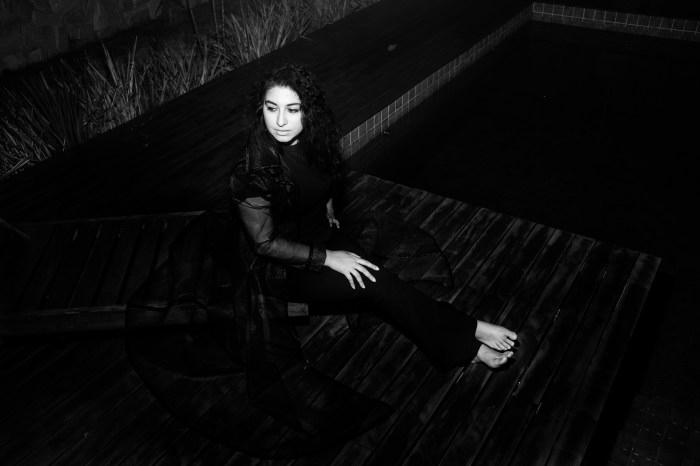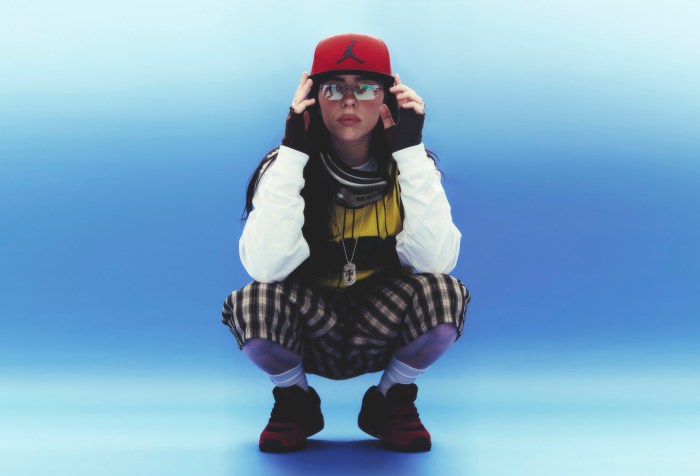When ex-pat Karole Armitage returned to New York in 2004 with a new company and new work, she was greeted with hyperbolic praise that echoed the reception she had received from major critics in the '80s.
By: BRIAN MCCORMICK
ARMITAGE GONE! DANCE
“Connoisseurs of Chaos”
The Joyce Theater
175 Eighth Ave. at 19th St.
Jan. 22, 23 & 27 at 7:30 p.m.;
Jan. 24 at 7 p.m.;
Jan. 25 & 26 at 8 p.m.
Post-performance discussion Jan. 23
$44, $25 on Sun.
212-242-0800 or joyce.org
When ex-pat Karole Armitage returned to New York in 2004 with a new company and new work, she was greeted with hyperbolic praise that echoed the reception she had received from major critics in the '80s. Inspired by her dancers and the glowing reception to her New York comeback, she decided to form a full-time company in New York, Armitage Gone! Dance. Exalted by reviewers and presenters alike, her homecoming was seized on as a kind of counterpoint to the brain drain of young artists fleeing New York for Europe (again).
Kansas-born Armitage began her professional career in 1973, as a member of Ballet du Grand Theatre de Geneve, a company rooted in the Balanchine aesthetic. From 1976-1981, she was with Merce Cunningham Dance Company. She created her first piece in 1978, and throughout the '80s led her own New York-based dance company. In 1987, Nureyev asked her to create a dance for the Paris Opera Ballet. Its success led to many European commissions and appointments that lasted into the new millennium.
Armitage has created dances for videos by Madonna and Michael Jackson, and has collaborated with visual artists including Jean-Paul Gaultier, Jeff Koons, and Christian Lacroix. She's also the choreographer for “Passing Strange,” the outstanding musical feature moving to Broadway from the Public.
Armitage came back because she was invited by the Joyce Theater to create a new ballet. She's staying, she said because, “There's a tradition of dance in New York that is still unrivalled; and there are so many people here who are so well informed – this is invaluable and unique.”
Times have changed.
“Maybe New York was the perfect place to make art once,” said the choreographer, whose seminal work “The Watteau Duets” was made here prior to her European sojourn. It's not news that conditions for making work here are abysmal, but that hasn't stopped most artists. Of course, most choreographers entering the market these days aren't utilizing the company model. Even with support, Armitage admitted, having a company is a daily struggle.
“I do question if this is the way I really want to live, dealing with such banal stuff when the world is faced by such tremendous questions,” the choreographer explained.
“Like everything, it's a tradeoff. But I absolutely still feel I cannot make the work I want to in any other way. When you work with the same group of people, you can push them to greater heights and greater depths technically, emotionally, and physically.”
These qualities are apparent in the choreographer's new work for six dancers – Leonides D. Apron, Matthew Branham, Frances Chiaverini, Megumi Eda, William Isaac, and Mei-Hua Wang – set to Morton Feldman's “Patterns in a Chromatic Field.” Continuing the explorations Armitage began in “Time is the echo of an axe within a wood” (2004), to music by Bartok, and “Ligeti Essays” (2007), “Connoisseurs of Chaos” is part three of the “Dream Trilogy.”
As in the first two works in her trilogy, “Connoisseurs” contrasts lyricism with disruptive forces, divergent grouping and phrases, and incidents of unrest, bringing into focus the choreographer's interest in exploring “inconclusive interactions and disappearing relationships.”
Very much choreographed to the music in terms of tone and structure, shards of music and movement recur, but each time subtly altered, shifted perhaps in speed or key. Group partnering and circular huddles brim with robust energies and balletic lines that ooze and melt away with sensual shoulders, hips, and torsos.
Affectations fill moments of pause. Simple touches offer a glint of earnest affiliation. Body and floor slaps and hints of humor also pop like white caps from the luscious, surging flow. The assemblies alternate with duets and trios when the energy of the music is less dissonant, more ambient and minimalist. These more intimate sequences gain a ritualistic, spiritual quality as the trance-inducing music loops that characterize them shift the channels of perception.
The dance includes set design by painter and longtime collaborator David Salle, lighting design by Clifton Taylor, costume design by Peter Speliopoulos, and live music by pianist Andrew Russo and cellist Felix Fan – a real rarity for Feldman's music.
Armitage is home again. We can take from her work the beauty and mutability, the consciousness of global culture, and “the eroticism of gravity,” but more than that, we can take pride and feel an honor that there are still American artists committed to improving the quality of our lives through their art and their work – that loaded, immeasurable four-letter word.


































